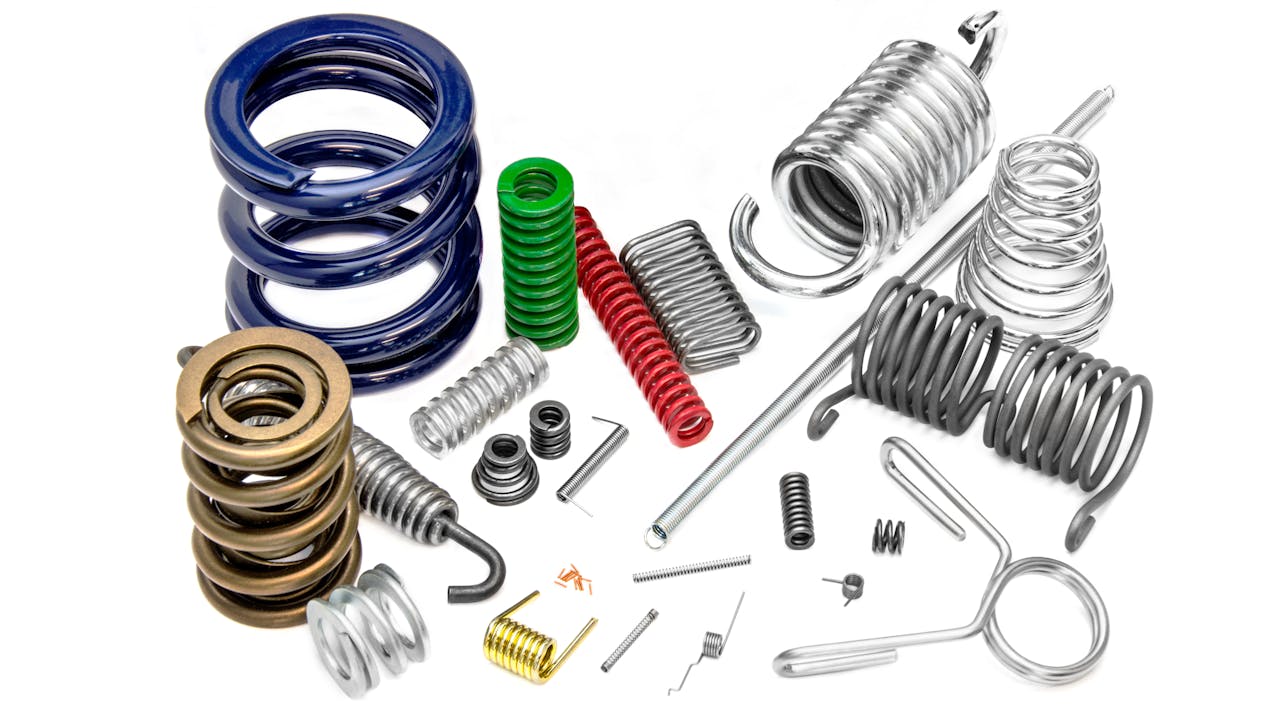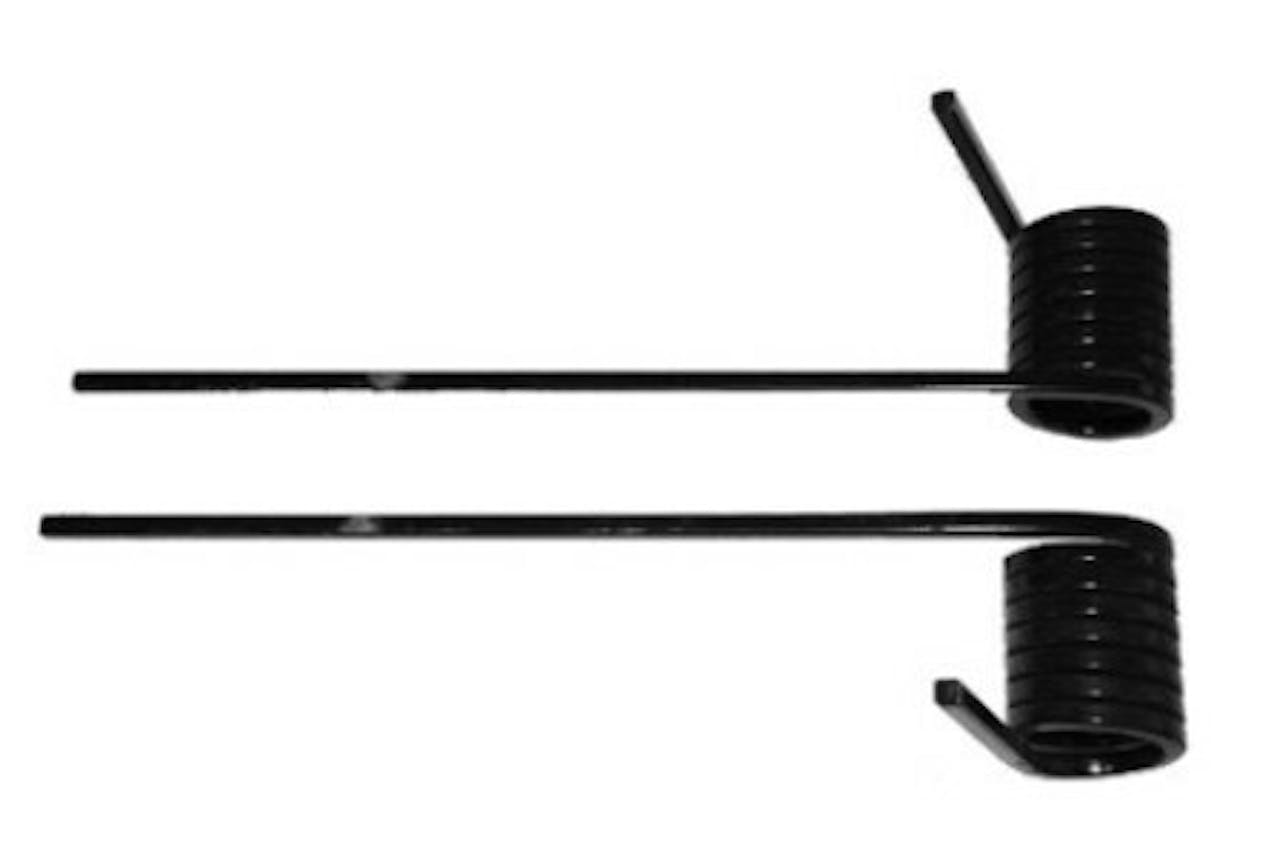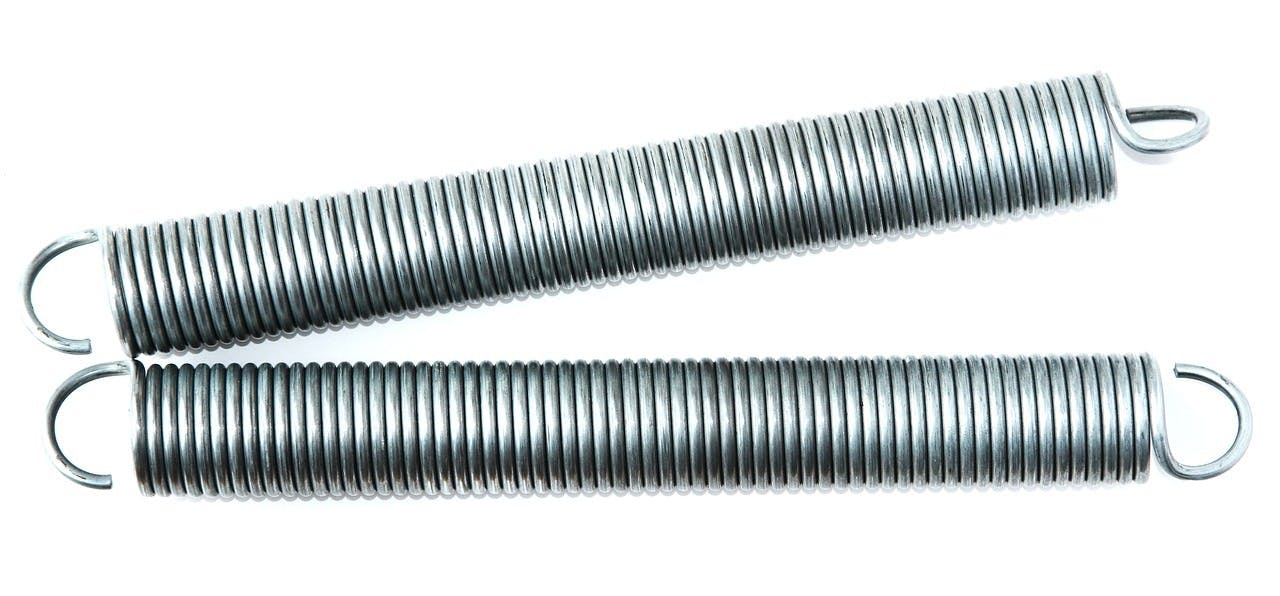The Difference Between Torsion & Extension Springs
The most common type of helical coil spring is a compression spring. In a compression spring, increasing load reduces the height of the spring. The spring releases this absorbed energy as it returns to its free length. There are two other types of important helical coil spring types that help in other mechanical situations. These are torsion springs and extension springs.


A torsion spring rotates with increasing loads. Torsion springs are made similarly to compression springs but need end configurations to allow the spring to be loaded. This is usually an arm.
Common applications for torsion springs are for lifts, hinges, snow plows and garage doors.
An extension spring gets longer with increasing load. Extension springs are made similarly to compression springs but are usually close coiled and need ends to allow the spring to be pulled. This is usually a hook that is formed by pulling the last coil open or held in place by coning down the end coils.
The most commonly known application for an extension spring is a screen door spring. The screen door spring holds the door shut by pulling the door towards the frame. Similarly, extension springs are used in a variety of places where a load must be held tight or suspended.

Torsion and extension springs are used for many of the same types of applications. Space, load and travel usually drive the choice of the designer. Torsion springs usually take less space but may have a higher spring rate. Extension springs may be better over long distances but could be heavier. Also, there is cost associated with the extra forming processes required in both a torsion and extension spring.
Interested in the manufacturing process? Check out our manufacturing services page.